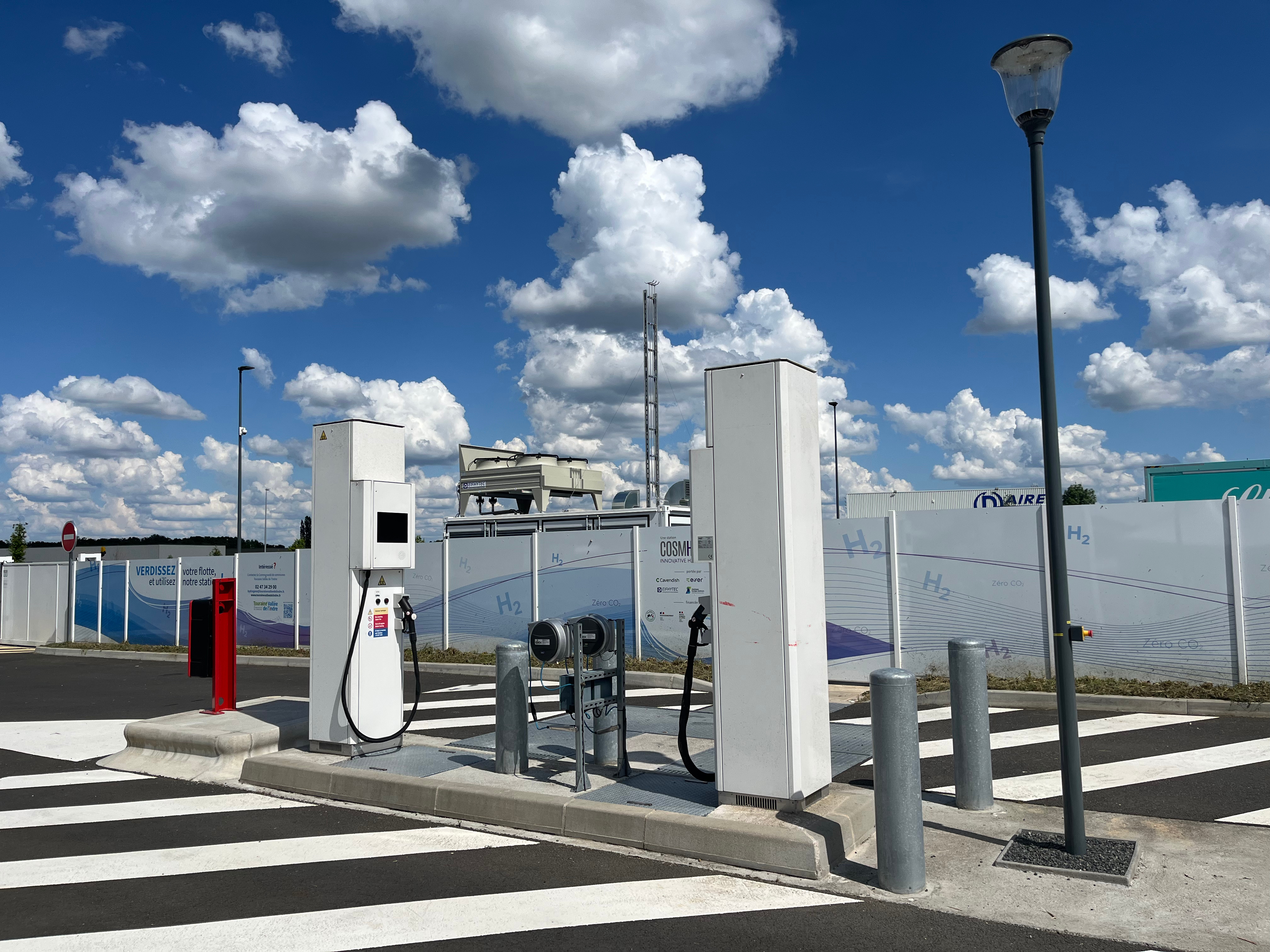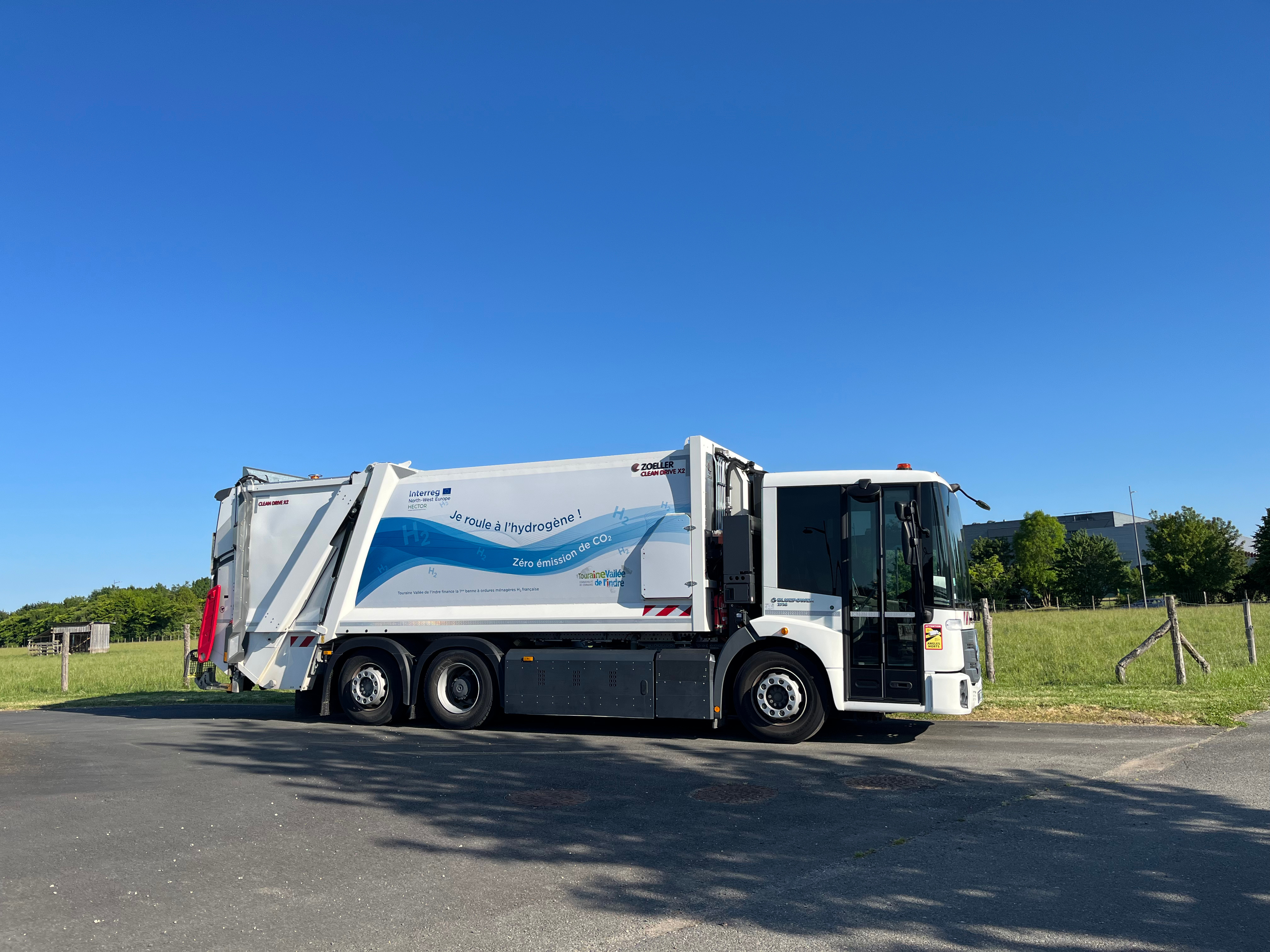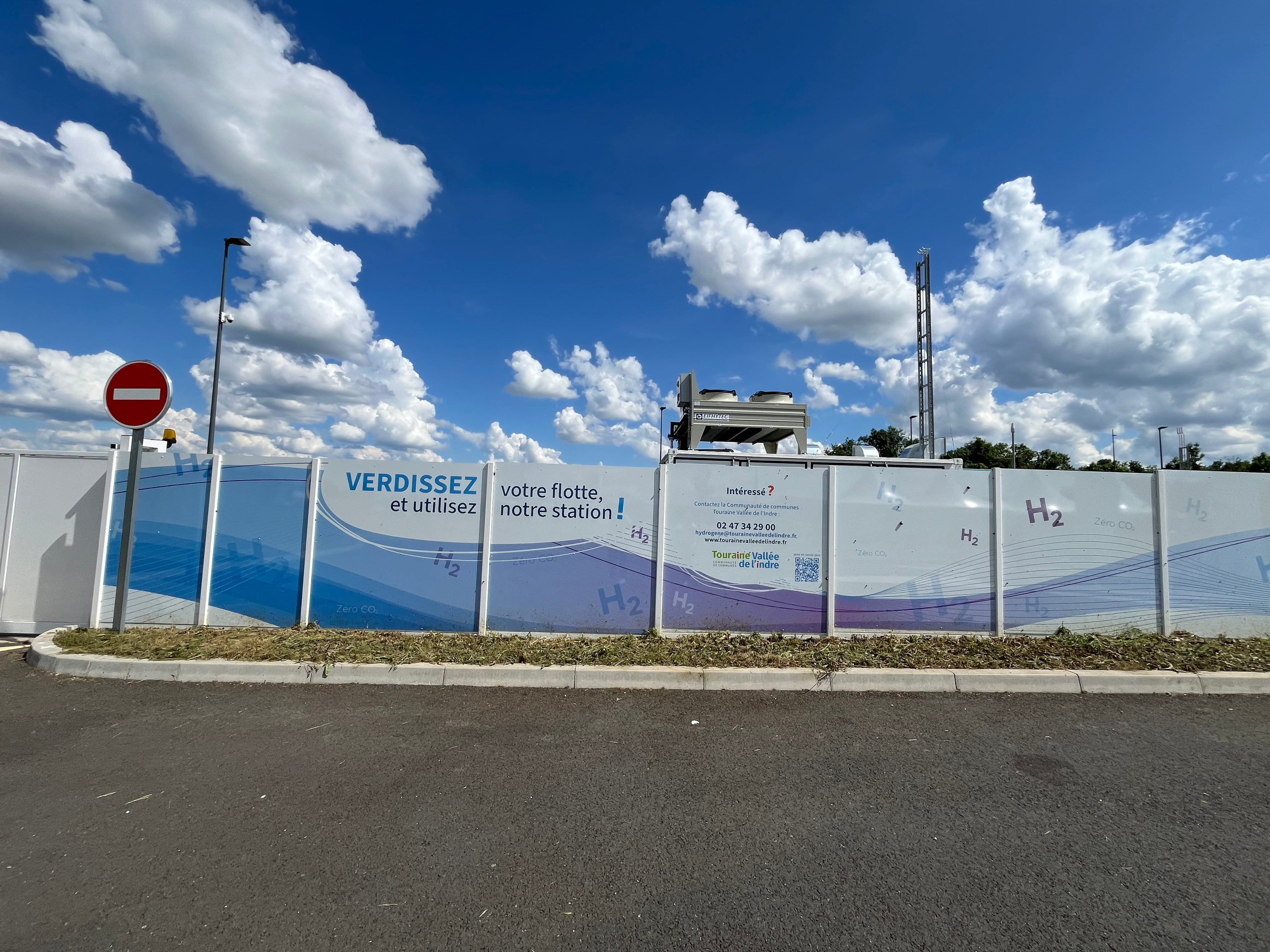The refuelling station demonstration site
A facility built in several phases. The hydrogen refuelling station at Sorigny, located in the Isoparc business park, is the result of a major project led by the Communauté de Communes Touraine Vallée de l'Indre (CCTVI). It is part of the European COSMHYC DEMO project, funded by the Clean Hydrogen Partnership. Work began in 2022, following a technical design phase conducted in collaboration with the project's industrial partners. Construction of the infrastructure was completed in 2023, followed by a phase of installation and testing of all the equipment. After several months of testing, the station has been officially in service since mid-2024. It is now operational and open to both private and business users.

A state-of-the-art station. The station enables hydrogen to be refuelled at either 350 bar or 700 bar, depending on the technical characteristics of the hydrogen-powered vehicles. It is designed for a basic capacity of 200 kg of hydrogen per day, and peak flows of up to 60 kg/hour, making it particularly well suited to the needs of heavy mobility (e.g. lorries, buses, refuse collection vehicles) and professional fleets. The Sorigny station stands out for its hybrid compression technology, developed as part of the COSMHYC projects, combining mechanical compression and thermochemical compression based on metal hydrides, offering a quieter, more efficient and more reliable alternative to conventional compressors. The infrastructure also includes hydrogen storage, automated control systems and easy access for different types of vehicle.

A strategic location in the heart of the Loire Valley. Situated in Sorigny, just 1 km from the A10 motorway, the resort benefits from a strategic location. It is ideally located within a business park (Isoparc) and in the immediate vicinity of the Tours metropolitan area, maximising its potential use by local authorities, businesses and logistics operators, famong others. Its position on the Trans-European Transport Network (TENT-T) corridor linking Paris to Bordeaux, and more widely the Benelux countries to Spain and Portugal, gives it a key role in the emergence of a network of stations on a national and European scale. It will provide a missing link between the existing stations in Nantes, Paris and Lyon, helping to make hydrogen more accessible for long-distance journeys.
Opening event at the demonstration site
On May 15th, 2025, the COSMHYC DEMO project proudly celebrated the official opening of its demonstration site in Sorigny, France. The event brought together project partners, policymakers, and hydrogen stakeholders from across Europe to mark this key step toward cleaner, sustainable mobility.
Guests had the opportunity to explore the innovative hybrid hydrogen compression technology at the heart of the project, and to hear insights on its role in advancing Europe's hydrogen infrastructure.



